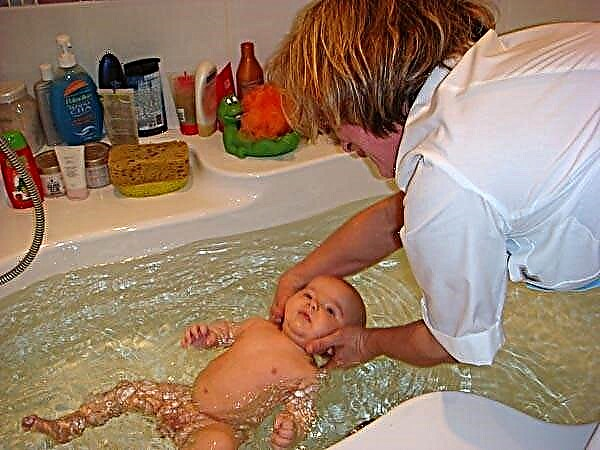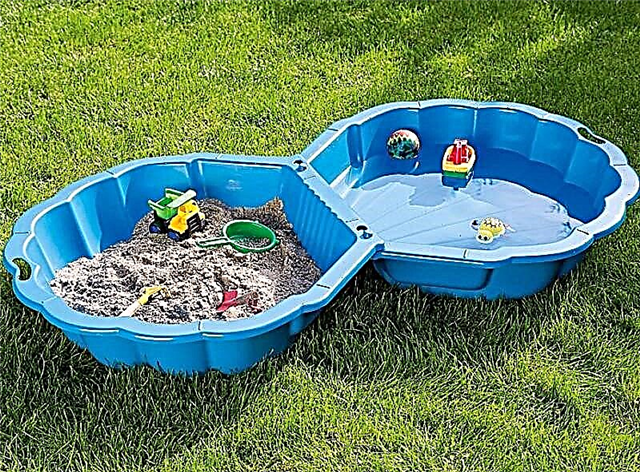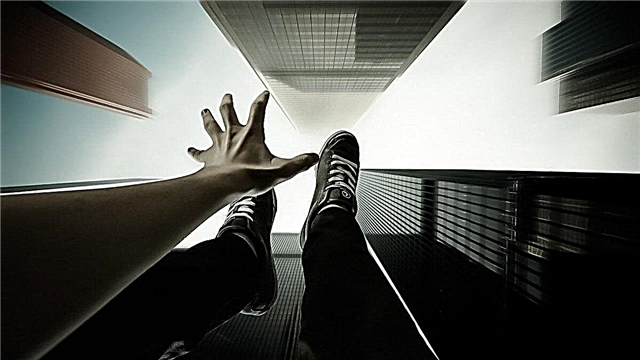A newborn baby is like a small miracle. He may surprise you every day with a new activity, skill, or skill as he grows. But the most memorable skill that most parents expect after 6 months is walking. The first few shaky steps the baby takes marks the beginning of a whole new phase for babies.
But it must be remembered that there is no certain age at which children begin to walk. Each child develops at its own pace. Parents should remember to watch for some warning signs and know how to make it easier for children to walk.
Before developing skills and taking the first steps, babies need to go through a number of other stages. The road to walking begins very early, even when you start spreading the crumb on your stomach. It helps to strengthen the muscles and develop good control over head and neck movements.
The time spent on the stomach will allow the child to learn how to roll over and then sit on their own. Then most babies begin to crawl, then stretch to a standing position, followed by the first independent step.
Walking is a life skill and, like any other ability, requires training through parent-initiated exercise and play.
How many months do babies start to walk?
The first year of life is about developing and fine-tuning motor and sensory skills. Babies develop basic senses in the first few months and then build motor and muscle strength through simple activities such as sitting, crawling, and rolling over.
Most babies develop some signs of assisted walking at 9 to 12 months, after which they simply improve their motor control and strength.
However, this age range is not absolute, and some normally developing children may take the first step at a later age (for example, before 16-17 months).
How does a child learn to walk?
The baby will go through certain stages of development. Learning to walk involves much more than footwork.

- from birth to 2 months. There is a walking reflex. When you hold your child in a standing position on a hard surface, he will move his legs as if he were walking. The reflex disappears after about 2 months;
- from 3 to 4 months. The kid does mini push-ups. The child, lying on his stomach, raises his head and chest from the surface, using his hands for support. Mini push-ups strengthen the muscles of the upper body, which are important for subsequent walking;
- 5 months. When held in a standing position, the baby jumps up and down. This movement helps build leg strength;
- from 6 to 9 months. Learns to sit. Sitting without support requires strong neck muscles, head control, balance, and coordination - all essential skills for walking. Many infants also learn to crawl between 7 and 10 months of age, although some skip this step altogether and go straight to walking. Can stand holding on to something. Soon the child will be traveling - with sliding steps, holding onto whatever is nearby;
- from 9 to 12 months. Raised to a standing position with a stable object, sofa or table. Understands how to make deep knee bends to sit up from a standing position. Can stand unsupported for a few seconds and may be able to walk holding hands
- from 12 to 15 months. The child takes the first steps, albeit awkwardly. The outstretched arms of his "Frankenstein" walk really help maintain balance. Soon the baby will learn to get down and get up again;
- from 16 to 18 months. With the help, the baby can walk up and down the stairs. He might even be able to go back. Dances to the music;
- from 19 to 24 months. Can increase his speed before running. By the second birthday, a child can kick the ball, stand on tiptoe, carry something in his hands while walking, and jump from a low step to the floor.
There are several things that affect what time children start walking on their own. Genetics among them is usually one of the dominant ones.
But despite the central role of genetics, parents can also play a big role in getting a child to walk early.
Regular practice and parenting encouragement is key to ensure that your child is able to smoothly acquire walking skills.
How can you help your child learn to walk?
Encourage your child to crawl and stand. Children begin to walk only after they learn to stand. But before that, they learn to crawl. Crawling is the baby's first independent movement and lays the foundation for standing and walking.
Encourage crawling as this strengthens the baby's muscles. You can play games that train your lower back and leg muscles.

- lift the child to his feet. Once your baby is six months old, spend a few minutes each day holding your baby on her feet to help her get used to standing. He will learn to maintain body weight on both soles. The body weight transferred to the knees strengthens the joints and stimulates the growth of the leg muscles;
- arrange items that help you stand. There are several assistive toys specifically designed to support your child's body weight when standing. Buy one for your toddler and place the toy next to it when he plays. The crumb will grab onto it to help itself rise from a standing position;
- make it easier to walk initially. When the child begins to walk but is not yet confident in his abilities, place support objects around to help him hold on. Follow your baby as he travels, but let him move on his own.
Let the baby walk without help. When a child begins to walk without support, do not worry and do not rush to pick him up. Instead, place your arms close, like a defender, as he slowly rearranges his legs. The child must learn to maintain body weight on their legs. Not only muscles are involved, but also the work of the brain and inner ear, which help maintain balance.
Activities and exercises to help your child learn to walk faster
Exercising through play is a good way to practice walking. Below are some simple steps to help your child take the first step.
1. Get the toy out.
Age to play: six months or older.
Exercise: Place the child on a soft surface while supporting him. Ask another person (dad, older child, grandmother, friend) to hold the baby's favorite toy slightly above eye level so that the baby raises its head. Invite your child to jump on their legs, and let your "partner" tell the child how to grab the toy.
Benefits: Strengthens joints and muscles to maintain body weight.
2. Children's dance.
Age to play: eight months or older.
Exercise: Play some music your child likes and help him to stand on a soft surface such as a mattress. Hold the crumbs' hands to help him move in the dance. And, since the arms of the baby will be occupied, the legs must carry the entire body weight alone. The movement of the torso will change the center of gravity and the child will learn to maintain balance.
Benefits: helps the child learn to maintain balance, strengthens the leg muscles.
3. Fun with bubble wrap.
Age of the game: from 11 months.
Exercise: Place a large layer of bubble wrap on the floor. Place your child on it and let him grab an object for support. The baby will experience a strange sensation of bursting bubbles under their feet.
If the toddler is scared, take a step on the sheet and show the child what will happen.
The clapping and tickling will keep the child busy for a long time.
Benefits: Exercise the steps in preparation for full walking.
4. Take a walk together.
Age of the game: from 12 months.
Exercise: Go to a park or beach with the whole family. Walk with the child, holding his hands from different sides. When you feel that he is trying to pull his hand out of yours, let go, but keep walking behind. It is in spontaneous moments like these that you realize that the child has begun to walk independently.
Benefits: Walking practice, strengthening family ties.
Activities like these help your child walk. But it's also important that parents take precautions.
Precautions when the child is walking

- do not leave the crumbs unattended.
Never leave a child alone, even if he is 18 months old and can walk on his own, as injuries are possible. If you practice outdoor walking skills, be vigilant. Even at home, a child can accidentally topple over, so always watch out for him;
- start training on a soft surface.
Start the first exercise on an unstable surface such as a rug or mattress. This reduces the stress on the child's sensitive legs and joints, softens the fall. As your baby improves her own body weight retention skills, you will be able to move to harder surfaces;
- do not use baby walkers.
Many pediatricians are strongly opposed to the use of baby walkers as they can interfere with the proper development of the muscles in the baby's upper leg. And because the walker helps the baby reach dangerous objects or chemicals that the baby usually cannot reach, they become an unsafe item;
- Let your child walk barefoot indoors, but use shoes outdoors.
Have the child walk barefoot while indoors, as this gives the feeling of the texture of the floor.
While walking barefoot is better, that doesn't mean shoes don't have advantages. Experts recommend that you protect your child's feet with boots when you go outside. A properly shod baby is a prerequisite for the formation of the foot.
Footwear for toddlers should be flexible, lightweight, and have a soft, light inner lining. On the outside, it should be equipped with an anti-slip sole to reduce slipping and the likelihood of falling;
- do not pressure your child to walk faster, let it come naturally.
Walking is a developmental stage that a child reaches when the time is right. Your toddler will show a natural propensity to walk by showing signs of interest. And that's when you can start learning.
It is very important for the little one to explore the house. It is imperative that parents remove any hazardous items scattered across the floor. Hide the wires and cover the sharp edges of the furniture. A safer home gives the child more freedom and the ability to exercise walking skills.
Why doesn't the child start to walk?
There are times when a child has a delayed achievement in walking.
Do not panic.
Medical experts say that if a child under 18 months old has not yet started to walk, there is no need to worry or worry prematurely. The kid will be able to easily catch up with his peers later.
Here are some of the main things your toddler may have to walk later than usual:

- premature babies may learn to walk later.
Babies born on time can take their first steps on their own at 12 months of age. However, premature babies in most cases will begin to do so at a later age - 15 months. Such babies have a slower overall growth. And this is a variant of the norm for them. Regular examination by a doctor ensures that the premature baby reaches all stages of development, even if it lingers somewhere;
- early neonatal infections sometimes lead to developmental delays.
Infectious diseases in early childhood can lead to the absence of any developmental stage or to its delay.
For example, a lung disease called bronchopulmonary dysplasia can affect the position of the baby, which subsequently alters physical activities such as sitting and walking. It is necessary that the pediatrician checks the child after each attack of a serious illness for the timely diagnosis of any developmental delay;
- some genetic disorders can slow down walking.
Genetic disorders such as autism, cerebral palsy, and Down syndrome can delay the onset of physical skills such as walking. Check your child regularly for these problems.
Development alarms
- By six months: The child does not partially support the body weight on his legs and does not try to squat and bounce.
- By nine months: The baby cannot stand with support and is unable to pull himself up to a standing position.
- By twelve months: Doesn't take steps with support.
- By eighteen months: does not walk without the support of the object or parent holding it.
When your toddler shows any of these symptoms, stay calm. Just take your child to the doctor. It is advisable to talk to your pediatrician about the alleged causes. Perhaps the baby needs a little more time.
As long as the child is moving in a positive direction at other stages of development, he is probably just taking his time to acquire the walking skill. Enjoy it now, because when the time comes and your little one walks on his own, you will remember with nostalgia the days when you did not run after him 24 hours 7 days a week!



